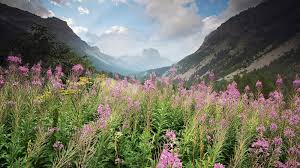Notes On Environment-Biodiversity of India-For WBCS Exam.
পরিবেশ সম্পর্কিত নোট – ভারতের জীববৈচিত্র্য – WBCS পরীক্ষার জন্য।
The term biological diversity or biodiversity refers to the variety of life forms and habitats found in a defined area. UNEP (1992) defines it“as the variety and variability of all animals, plants and micro-organisms and the ecological complexes of which they are a part”. The term biodiversity was coined by W.G. Rosen (1985). Diversity characterizes most living organisms, the our earth supports something like 5 to 10 million species of plants and animals (IUCN, 1980) which have been the result of 3 billion years of evolution involving mutation, recombination and natural selection.Continue Reading Notes On Environment-Biodiversity of India-For WBCS Exam.
Biodiversity is an umbrella term covering diversity at genetic, species and ecosystem level. The convention on Biological Diversity defines biodiversity as “The variability among living organisms form all sources including, interalia terrestrial, marine and other aquatic ecosystems and the ecological complexes of which they are a part; this includes diversity within species, between species and of ecosystems.” In short it refers to the whole variety of life on earth.’ Biodiversity represents the totality of genes, species and ecosystems of a region.
Biodiversity is fundamental to addressing some of the world’s greatest challenges such as climate change, sustainable development and food security. India is known for its rich biological diversity. The country has already documented over 91,000 species of animals and 46,000 species of plants in its ten bio-geographic regions.
India as a Mega Diverse Country
India is one of the 17 mega diverse countries classified by Conservation International. The mega diverse counties are the following:
- Australia
- Brazil
- China
- Colombia
- Democratic Republic of the Congo
- Ecuador
- India
- Indonesia
- Madagascar
- Malaysia
- Mexico
- Papua New Guinea
- Peru
- Philippines
- South Africa
- United States
- Venezuela
India is also recognised as one of the eight Vavilovian Centres of Origin and Diversity of Crop Plants. Nearly 65,000 native plants are still used prominently in indigenous health care systems. Here we have more than 300 wild ancestors and close relatives of cultivated plants still growing and evolving under natural conditions.
Ten Biogeographic Zones in India
There are 10 biogeographic zones in India. They are the following:
- Trans Himalayan zone.
- Himalayan zone.
- Desert zone.
- Semiarid zone.
- Western ghat zone.
- Deccan platea zone.
- Gangetic plain zone.
- North east zone.
- Coastal zone.
- Islands present near the shore line.
Our own publications are available at our webstore (click here).
For Guidance of WBCS (Exe.) Etc. Preliminary , Main Exam and Interview, Study Mat, Mock Test, Guided by WBCS Gr A Officers , Online and Classroom, Call 9674493673, or mail us at – mailus@wbcsmadeeasy.in
Please subscribe here to get all future updates on this post/page/category/website



 Toll Free 1800 572 9282
Toll Free 1800 572 9282  mailus@wbcsmadeeasy.in
mailus@wbcsmadeeasy.in


















































































































